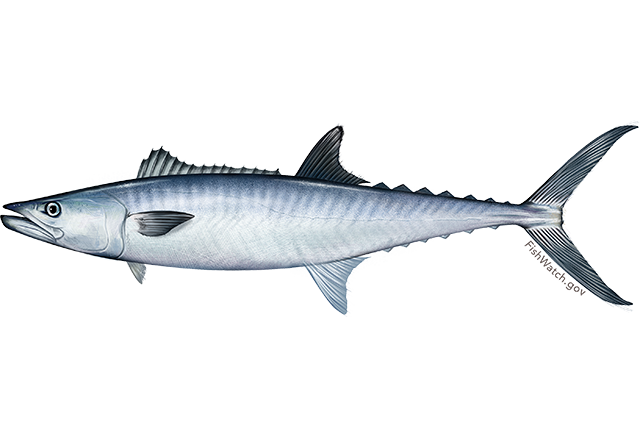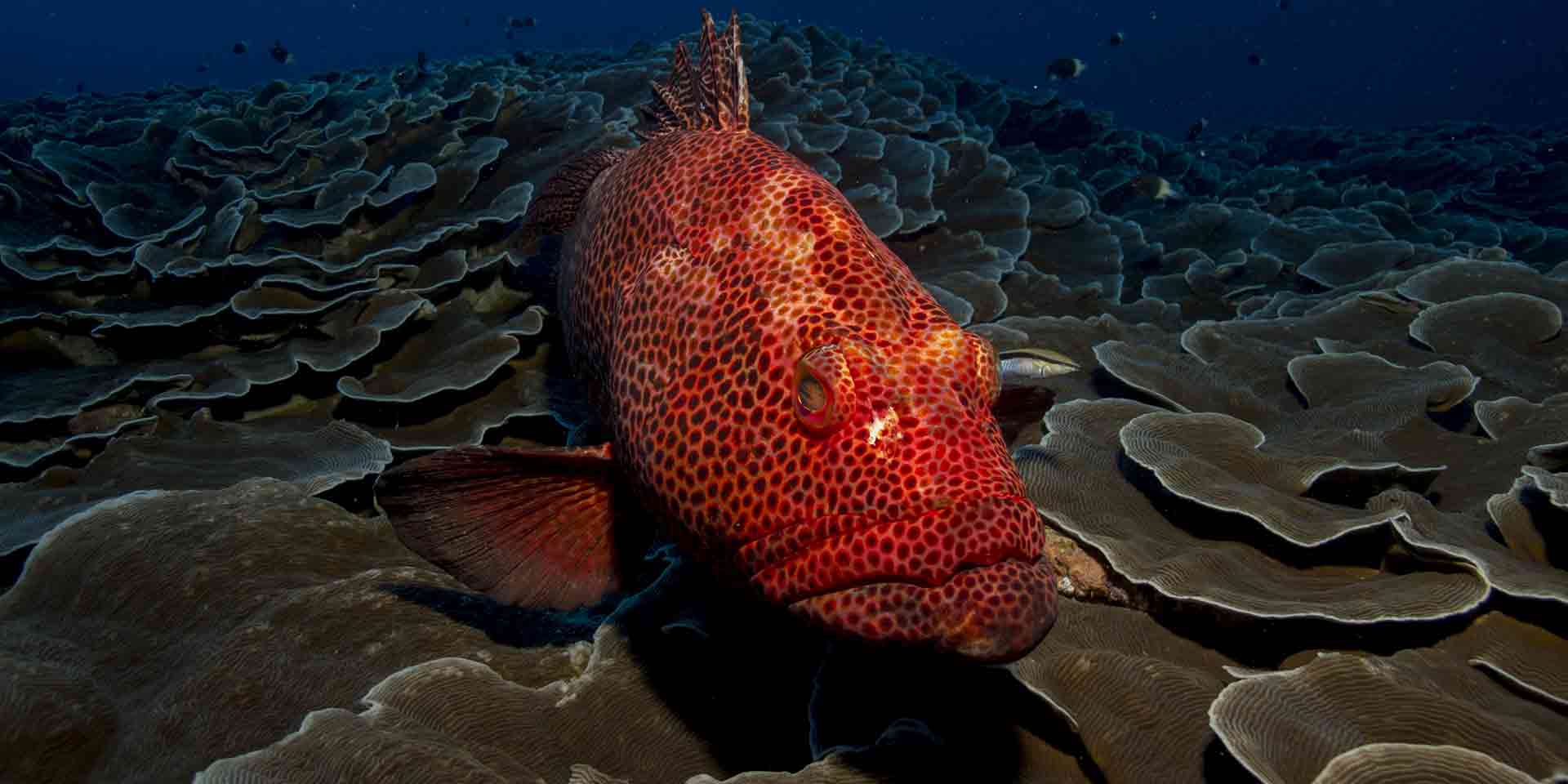King Mackerel
 U.S. wild-caught king mackerel is a smart seafood choice because it is sustainably managed and responsibly harvested under U.S. regulations.
U.S. wild-caught king mackerel is a smart seafood choice because it is sustainably managed and responsibly harvested under U.S. regulations.
Appearance
- King mackerel are iron-gray on the back and silvery on their sides and belly.
- They have pale to dusky fins.
- Small king mackerel sometimes have spots like Spanish mackerel, but king mackerel can be distinguished by their sharply dipping lateral line and gray anterior (near the front) dorsal (the upper side) fin.
Biology
- King mackerel grow fast, up to 5 ½ feet and 100 pounds.
- They can live more than 20 years.
- They are able to reproduce when they reach 2 years of age.
- There are two distinct populations, one in the Gulf of Mexico and one in the Atlantic.
- They spawn on the outer continental shelf from May through October. Females release eggs in the open water, where they are fertilized.
- Females grow much larger than males, an evolutionary strategy that maximizes the amount of eggs that a female can produce. Females can produce 50,000 to several million eggs.
- King mackerel are carnivores, feeding on fish, squid, and shrimp. They’re voracious feeders and have been observed leaping out of the water in pursuit of prey.
- Juvenile and larger pelagic fish feed on smaller king mackerel. Bottlenose dolphins and large fish, such as sharks and tunas, feed on adult king mackerel.
Where They Live
- King mackerel are found in the Atlantic Ocean from Massachusetts to Brazil, including the Caribbean and Gulf of Mexico.
Management
- NOAA Fisheries and the South Atlantic and Gulf of Mexico Fishery Management Councils manage the king mackerel fishery.
- Managed under the Fishery Management Plan for the Coastal Migratory Pelagic Resources in the Gulf of Mexico and South Atlantic Region:
- Commercial fishermen must have a permit to harvest king mackerel.
- The number of available permits is limited to control fishing pressure on king mackerel.
- Annual catch limits divided between the commercial and recreational fisheries for the Atlantic and Gulf of Mexico stocks.
- Seasonal and per-fishing-trip limits.
- Minimum size limit to allow fish time to mature and spawn.
- Seasons for the Atlantic and Gulf of Mexico stocks. Seasons or areas can close early if quotas are reached.
- Gillnets are prohibited in Florida state waters. They are also prohibited in federal waters, except seasonally in certain areas.
- State regulations are fairly consistent with federal regulations.

